In the world of Search Engine Optimization (SEO), Key Performance Indicators (KPIs) serve as the compass that guides our journey towards success.
They are the critical signposts that indicate whether we’re on the right path or if we need to recalibrate our strategies.
Every business has its own set of KPIs, such as monthly sales revenue, the number of returned items, etc.
For SEO agencies, KPIs could be anything from organic traffic, bounce rate, conversion rate, to average time spent on a page.
It’s not about which one is better than the other.
The real challenge is to identify which specific KPI – or KPIs – will enable us to measure the effectiveness of our strategies.
In this article, “Top 21 SEO KPIs to Track Performance in 2024”, we will delve into the most relevant KPIs that SEO professionals should focus on in the coming year.
We will explore how these KPIs can provide valuable insights into your SEO strategies, helping you optimize your efforts for maximum impact.
So, stay tuned as we navigate the exciting landscape of SEO KPIs!
What are SEO KPIs?

Search engine optimization key performance indicators (SEO KPIs) are crucial metrics for measuring how successful a campaign is.
The business will get an idea of whether their SEO efforts succeed or not, like an increase in website traffic, better ranking in the search engines, and improved conversions.
Why Measure SEO KPIs?
Measuring SEO KPIs is indeed vital for the success of your SEO campaign.
They provide a clear indication of whether your SEO efforts are aligned with your goals, offering valuable insights into your performance.
Here are some reasons why you should measure SEO KPIs.
Identify Opportunities: SEO KPIs can help identify areas of opportunity on your website that can be optimized for better search engine rankings.
Track Progress: They allow you to track the progress of your SEO efforts over time, helping you understand if your strategies are working or if they need adjustment.
Understand Your Audience: SEO KPIs can provide insights into your audience’s behavior, such as what keywords they use to find your site, which pages they visit, and how long they stay.
Improve User Experience: By monitoring SEO KPIs like bounce rate and page load time, you can identify issues that may be affecting user experience and address them to improve your site’s performance.
Increase Organic Traffic: SEO KPIs can help you understand what strategies are driving organic traffic to your site, allowing you to focus your efforts on what’s working.
Measure ROI: By tracking conversions from organic search, you can measure the return on investment (ROI) of your SEO efforts.
Stay Ahead of Competitors: Monitoring SEO KPIs can help you understand how you’re performing compared to your competitors and identify areas where you can improve.
Optimize Content: SEO KPIs can show you which pieces of content are performing well in terms of attracting and engaging visitors, helping you optimize your content strategy.
Improve Site Navigation: By understanding how users are navigating your site, you can make improvements to your site structure to enhance user experience and improve SEO.
Identify Technical Issues: SEO KPIs can help identify technical issues that may be affecting your site’s performance in search engines, such as broken links or slow page load times.
Understand Seasonal Trends: SEO KPIs can help you understand seasonal trends in your industry, allowing you to adjust your SEO strategy accordingly.
Improve Conversion Rates: By understanding how your organic traffic is converting, you can make adjustments to improve your conversion rates.
Align Marketing Efforts: SEO KPIs can help align your marketing efforts by providing insights into which keywords and topics are most relevant to your audience.
Budget Allocation: Understanding which SEO strategies are delivering results can help you allocate your budget more effectively.
Long-Term Success: SEO is a long-term strategy. Regularly monitoring your KPIs can ensure you’re on the right track to achieving your long-term goals.
SEO KPI Process
Here’s a 4-step process to help you figure out your SEO goals and KPIs.
1. Set Clear SEO Goals
This is where you decide what you want to achieve with your SEO efforts.
These goals should align with your overall business objectives.
For example, a goal could be to increase organic traffic to your website by 20% in the next quarter.
2. Choose Your Metrics
These are the specific numbers you’ll look at to determine if you’re reaching your goals.
For example, if your goal is to increase organic traffic, a metric could be the number of unique visitors to your site.
3. Choose Measurement Frequency
This is how often you’ll check your metrics. It’s typically done monthly, but some metrics might need to be checked more frequently.
For example, you might want to check your site’s bounce rate daily to quickly identify and address any issues.
4. Review and Reflect Regularly
This is when you take a step back to look at your KPIs and evaluate your SEO strategy.
For example, if your bounce rate is higher than you’d like, you might decide to improve your site’s content to keep visitors engaged longer.
Remember, the SEO KPI process isn’t a one-time thing. It’s a continuous cycle of setting goals, measuring progress, and making improvements.
And with each cycle, you’ll gain a better understanding of your SEO performance and how to optimize it.
Top 21 SEO KPIs to Track Performance in 2024
Here are the top 21 SEO KPIs that SEO professionals should focus on to track SEO performance in 2024.
1. Organic Conversion Rate
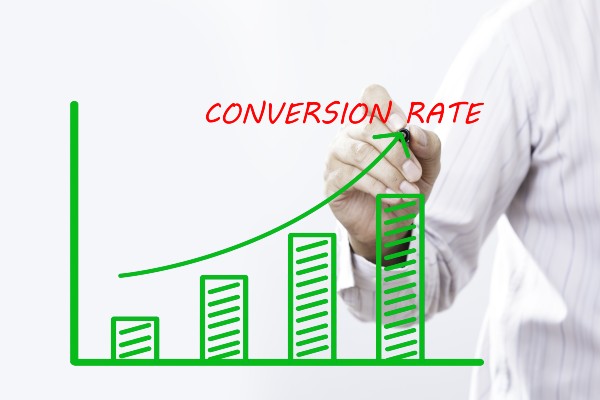
The organic conversion rate is the percentage of visitors who arrive at your website using search engines like Google,Yahoo, etc. and perform a desired action, such as making a purchase, signing up for a newsletter, or filling out a contact form.
It is among the most important metrics used to determine how well your SEO efforts have translated into valuable actions among organic traffic.
To find your organic conversion rate, take the number of organic conversions and divide it by the total number of organic visitors.
Next, multiply the answer by 100 so that it is expressed in percentage terms.
Organic conversion rate = (number of organic conversions / total number of organic sessions) x 100.
2. Customer Lifetime Value (CLV)
Customer lifetime value (CLV) is a KPI measure that shows the maximum profits you can get from just one customer within their relationship history with you.
It is an important KPI as it shows the potential value of every customer you turn to on your own.
With CLV, you can find out who is the best customer that keeps bringing revenue into your business.
It can thereby direct your marketing and customer service towards such valuable clients.
A high CLV suggests that your SEO efforts are bringing on board and retaining valuable customers for your business.
With knowledge about the future worth of your clients, you can figure out your SEO ROI and also explain why the SEO budget should be approved by your business owners.
Remember that CLV also changes with time as you make necessary adjustments.
CLV = Average Purchase Value x Average Purchase Frequency x Average Customer Lifespan
3. Cost Per Acquisition (CPA)
Cost per acquisition (CPA) represents the cost of each acquired customer.
It is the ratio between the total SEO channel costs and the conversions made through the SEO campaign.
Cost per acquisition (CPA) = Total SEO Campaign Cost / Conversions
A wide array of costs are involved in SEO, such as salaries for a team, agency costs, SEO tools, the production of content, and link building etc.
A low cost per acquisition means that your SEO strategy is drawing quality customers for a manageable price.
A high cost per acquisition, on the other hand, may show signs of inefficiency, thus leading to a very low ROI.
4. Organic Traffic
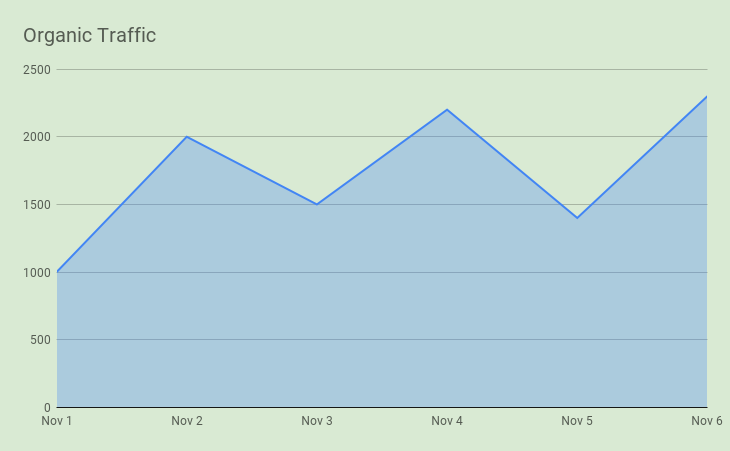
Organic traffic is one of many vital factors that can help determine the success of your SEO efforts.
This number shows how many people visiting your website are coming there through search engines like Google, Yahoo, Bing, etc.
People perceive organic traffic as valuable because it is free, sustainable, and relevant to the intended audience.
One of the most significant SEO KPIs you can track is organic traffic, which is the metric of users who find your website through search queries.
5. Keyword Rankings
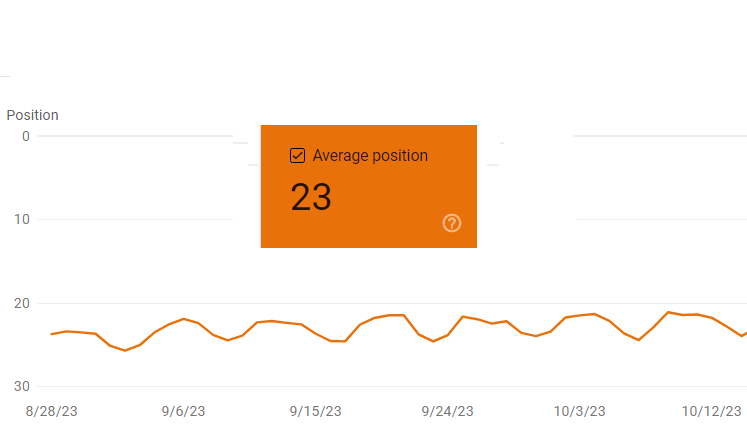
Keyword Rankings refer to the position of your website on the SERPs for specific search phrases or keywords.
High keyword rankings mean that your website appears near the top of the SERPs when users search for those keywords.
This can lead to increased visibility and more organic traffic to your website.
Monitoring your keyword rankings can help you understand how well your on-page and off-page activities are working and where there’s room for improvement.
For example, if certain keywords are consistently ranking low, it might be a sign that you need to optimize the content on your website related to those keywords.
Some of the best tools for tracking and analysing keyword rankings are Google Search Console, Semrush, Ahrefs, and Moz.
These tools provide valuable data, including keyword ranking information and competitor benchmarking, and can be used for website optimization purposes.
6. Click-Through Rate (CTR)
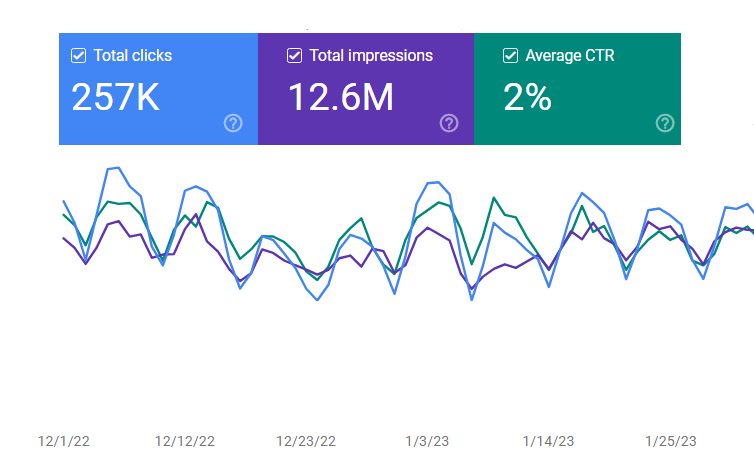
CTR, which stands for click-through rate, is defined as the number of people who view and click on your site among all those that are found on a search engine.
High CTR is assuring SERP users that your titles and descriptions are effective to click.
Click-Through Rate (CTR) = (clicks / impressions) x 100%
Here,
Clicks: The number of times people clicked on the link to your website in search results.
Impressions: The number of times the link to your website appears in search results.
There are many reasons why CTR is an essential SEO key performance indicator.
Search engines consider CTR a ranking factor and therefore a great CTR can help your site perform better in SERPs.
The user experience of your site influences your CTR indirectly.
Continuously clicking on your website’s link signifies that your title and meta description describe the content well and offer an appropriate user experience.
7. Engagement Rate
One of the most important SEO KPIs is engagement rate, which measures how much interaction and engagement users have with your website.
It refers to the conversion rate of your site in terms of the number of visitors who are attracted, retained, and captured by your site.
Meaningful actions like clicking on multiple pages, watching videos, and submitting forms, are taken into account.
A high level of engagement implies that your website offers useful and meaningful content that convinces users to linger, interact with it, and undertake desirable actions.
The engagement rate serves as a signal that search engines see as a measure of site quality and pertinence.
Engagement Rate = (Engaged Sessions / Total Sessions) x 100
An engaged session is defined as:
A period during which the user has spent at least 10 seconds on the page.
The user has viewed more than one page.
The user triggered a conversion event.
For example, if your website has 1000 visitors and 100 total engaged sessions, your engagement rate would be 10%.
8. Bounce Rate
Bounce Rate is a crucial SEO KPI that represents the percentage of visitors who leave your website after viewing just one page.
A high bounce rate might suggest that your website may not be as relevant to the search terms it’s ranking for, or that the content could be uninteresting or difficult to navigate.
Along with the Time Spent on Page (TSP), the bounce rate is a key performance indicator that could impact your website’s organic ranking in search engines.
The bounce rate is calculated by dividing the total number of single-page visits by the total number of visits to your website.
For example, if your website receives 100 visits and 20 of them are single-page visits, your bounce rate would be 20%.
Remember, a lower bounce rate is generally better, as it suggests that visitors are finding your content engaging and are exploring more of your website.
Monitoring and optimizing your bounce rate can help improve your SEO performance and user experience.
9. Domain Rating and Domain Authority
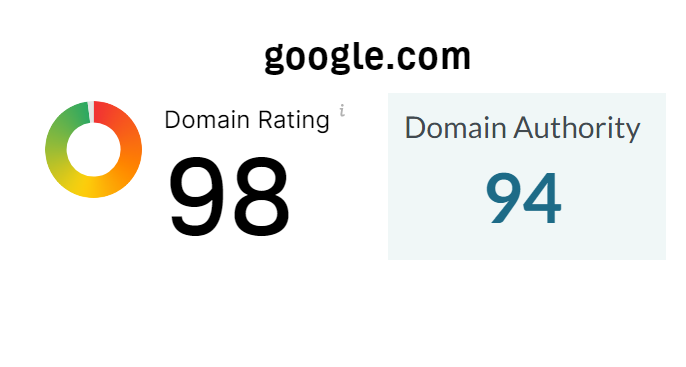
Domain rating (DR) and domain authority (DA) are two important KPIs in SEO used to assess the value and credibility of a website.
Domain Rating: Domain rating is a metric by Ahrefs that gauges a website’s backlink profile strength on a logarithmic scale from 1 to 100. Higher scores indicate a stronger backlink profile, making a website more authoritative and trustworthy, thereby increasing its search engine ranking.
Domain Authority: Domain Authority, introduced by Moz, is a predictive score estimating how well a website may rank on SERPs. It considers factors like backlink quality, on-page optimization, and overall domain health. The score ranges from 1 to 100, with higher scores suggesting a better chance of achieving higher rankings.
Domain rating and domain authority are both important SEO KPIs because they can help you track the progress of your SEO efforts.
By monitoring your DR and DA over time, you can see how your website is performing in terms of backlinks and overall authority.
This information can help you to identify areas where you can improve your SEO efforts.
10. Total Number of Backlinks

Total Backlinks is an SEO KPI that measures the quantity of links pointing to your website.
These links tell search engines that your site is reliable and has helpful information.
A higher number of backlinks indicates that your website is considered authoritative and trustworthy, which can lead to improved search engine rankings and increased organic traffic.
The total number of backlinks is significant, but at the same time, one needs to focus on the quality and importance of those backlinks.
A few good-quality backlinks from reputable sites would be worth many from the poor or irrelevant ones.
Ahrefs, SEMrush, Ubersuggest, and other paid tools are available on the market to find the backlinks pointing to your website.
However, you can also use Google Search Console to analyse the backlinks and performance of your website for free as well.
11. Page Views
The number of page views is one of the vital SEO KPIs that help evaluate the number of times a given page has been visited.
Many page views show that the traffic to your website is plentiful and that its content is relevant to what your consumers want.
Using page views it is possible to establish which parts of your website attract the most attention.
Through this, you can provide relevant content for your audiences, shaping your content creation strategy.
You need to ensure that you get more people checking out your web pages. It will indicate that SEO has worked for you.
GA4, the new version of Google Analytics, tracks pageviews as an event. When a new page is opened on the website or app, the event gets triggered automatically.
12. Average Session Duration
Another essential SEO key performance indicator is the calculation of the average session duration.
Average session duration is a metric that measures the average amount of time visitors spend per session on your website.
Usually, a longer average session duration is seen as positive because users think the website is interesting and worthwhile.
It is a broader metric that measures the overall time that users spend on your website or app.
Average session duration = Overall duration of sessions (in seconds) / Total number of sessions
The AVG session duration is generally between 2 and 3 minutes or more, as stated by Klipfolio.
However, the normal average session duration depends on the industry and kind of website.
E-commerce websites have an average session duration of approximately 2 minutes, while informational sites average about 3 minutes.
In a nutshell, long periods of use indicate that users are getting what they want on your website. Such an experience boosts positive perceptions among visitors.
13. Average Engagement Time
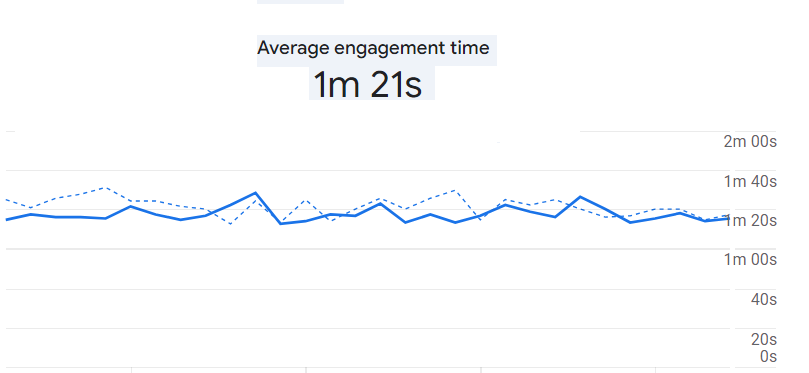
Among the vital metrics for studying website user engagement is the Average Engagement Time.
It’s important to understand that this is a separate measure from the average session duration, which evaluates distinct user actions.
The Average Engagement Time is defined as the average length of time that the app was in the foreground or the website had a focus in the browser.
In simpler terms, this metric tracks the amount of time your website was actively viewed on a user’s screen.
Average engagement time = (The total length of time your website was in focus or your app was in the foreground across all sessions) / (The total number of active users)
If the Average Engagement Time is high, it generally indicates that users are highly engaged and interested in your site’s content.
This metric is crucial for understanding user behavior and optimizing your website for better user engagement.
14. Branded vs Non-Branded Traffic
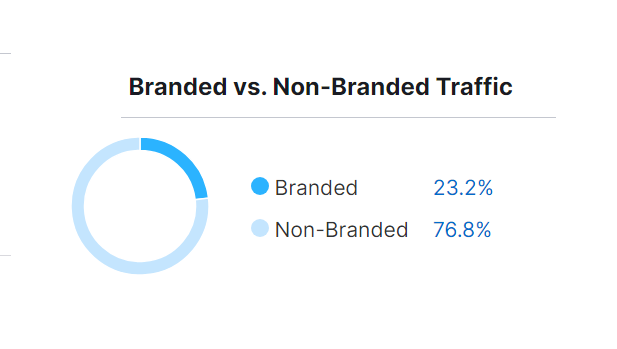
Branded Traffic is generated when people visit your website because they searched for your brand name or something specific to your brand.
For instance, if someone searches for “Nike shoes”, they’re creating branded traffic for Nike.
Non-branded Traffic, on the other hand, comprises visitors who find your website by searching for general terms, not specific to your brand.
For example, if someone searches for “running shoes” without mentioning a brand, they’re creating non-branded traffic for all shoe brands.
It’s important to know where both types of traffic are coming from.
By tracking these KPIs, you can understand how well your brand is recognized (branded traffic) and how well your website is performing in search results for general industry terms (non-branded traffic).
15. Google Business Profile Metrics
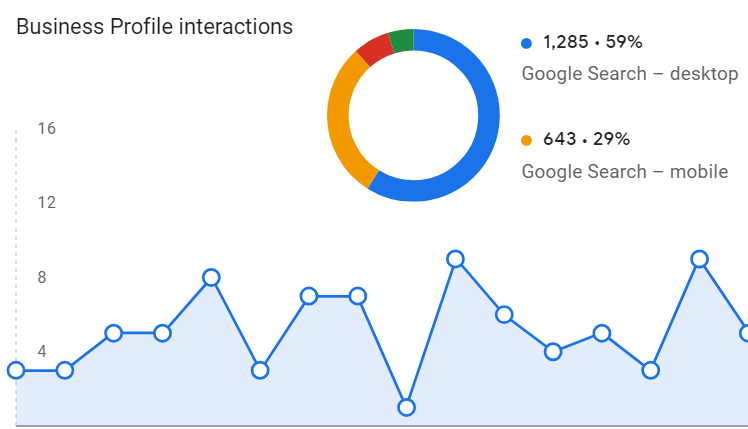
GBP, formerly known as Google My Business (GMB), is a platform that makes local businesses more visible and searchable by Google.
It is meant to be an all-inclusive representation of what businesses offer to clients living around their locality.
Key Performance Indicators (KPIs) for GBP, commonly referred to as metrics, play an important role in measuring how successful a business’s GBP listing is for search optimization.
After setting up your Google Business Profile, the platform will provide default metrics, such as searches, views, clicks, direction requests, and calls.
16. Page Load Time
Page load time, which measures how quickly a web page fully renders its content, is an important SEO metric.
It directly impacts user experience and search rankings.
A fast-loading page enhances user satisfaction, reduces bounce rates, and contributes to higher search visibility.
Search engines like Google prioritize speed as a ranking factor, making page load time a crucial metric for SEO success.
Monitoring and optimizing page load time as an SEO KPI ensure a seamless and efficient user experience, ultimately leading to improved search engine performance, increased organic traffic, and conversions.
17. Core Web Vitals
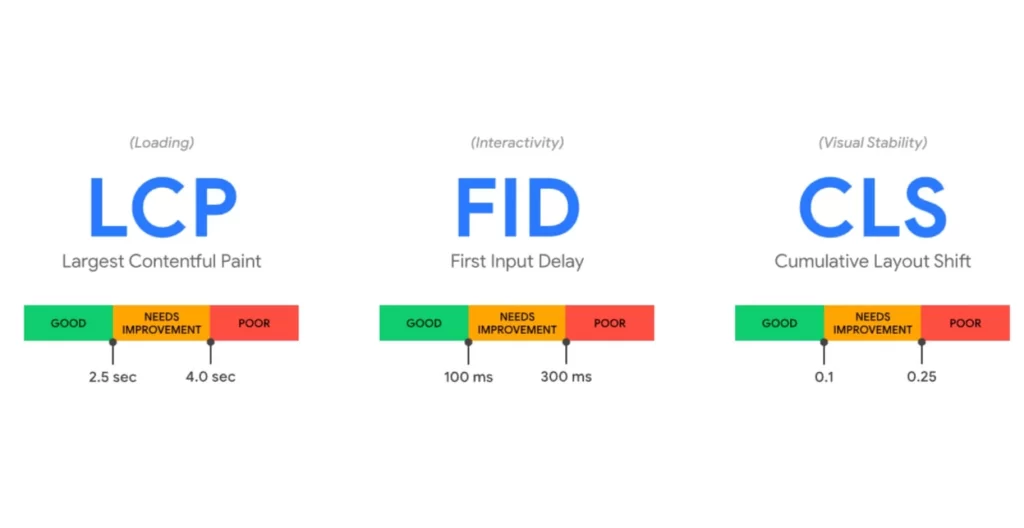
Core Web Vitals are crucial SEO Key Performance Indicators (KPIs) that assess critical aspects of user experience on websites.
Consisting of Largest Contentful Paint, First Input Delay, and Cumulative Layout Shift, these metrics evaluate the performance of a web page.
Google incorporates Core Web Vitals into its search ranking algorithms, giving priority to sites that provide superior user experiences.
As a technical SEO KPI, monitoring and optimizing these factors is essential to ensure swift loading, responsive interactivity, and visual stability, directly influencing search engine rankings.
Prioritizing Core Web Vitals enhances user satisfaction, reduces bounce rates, and ultimately contributes to improved website visibility and organic traffic.
18. Number of Indexed Pages
Number of Indexed Pages is a key technical SEO KPI that tracks how many pages on your website are discoverable by search engines like Google and Bing.
A higher number of indexed pages means your website has more chances to appear in search results, increasing your online presence and organic traffic potential.
Monitoring this metric allows SEO consultants or professionals to assess the impact of content strategies, site structure, and crawl efficiency.
A healthy and growing index often indicates good website structure and crawling, potentially contributing to improved search rankings.
19. Local SEO
This KPI focuses on optimizing your online visibility for local searches, ensuring your business shines in relevant local listings and maps.
To achieve this, optimize your website for local searches, maintain accurate business information on platforms like Google My Business, and actively encourage positive local reviews.
By tracking key Local SEO metrics like local keyword rankings, online reviews, and organic search traffic from local sources, you gain valuable insights into your local reach and effectiveness.
With the continued rise of location-based searches, integrating Local SEO into your performance metrics becomes vital for a comprehensive and thriving digital marketing strategy.
20. Mobile SEO
Tracking mobile SEO as an SEO KPI involves monitoring key metrics.
Tools like Google Analytics can help you assess key metrics like mobile traffic, user engagement, and mobile-specific conversions.
Google prioritizes mobile-friendliness in ranking, making mobile SEO an essential part of your KPIs.
Track mobile search rankings and assess click-through rates on mobile search results.
Monitor mobile bounce rates and optimize content for a seamless mobile user experience.
By incorporating mobile SEO into your KPIs, you adapt to evolving search trends, boosting visibility and performance on mobile devices.
21. Social Media Performance
Integrating social media performance into your SEO KPIs is crucial for a comprehensive online strategy.
Social media impact influences organic search visibility, brand awareness, and engagement
Monitor brand mentions and shares across platforms. Increased visibility fuels search engine love.
Include metrics like follower growth, post reach, and click-through rates to assess the effectiveness of your social media strategies.
Consistent and relevant social media activity contributes to a positive SEO impact.
Adding Social Media Performance into your SEO KPIs helps you understand your online success in a complete way
All of these factors are critical metrics for any local business and can be tracked and analysed as SEO KPIs.
Conclusion
Tracking and optimizing SEO metrics include a process of measuring how effective your Search Engine Optimization efforts are, enabling informed decision-making to improve your website’s visibility, organic traffic, and general performance.
Select KPIs that will be used to track your SEO progress.
Set up benchmarks and set targets.
Apply data analytics to access the trends and patterns of your online performance.
Prioritise your optimization efforts by using the data at your disposal.
Revisit and update your strategy regularly.
Remember, SEO is an ongoing process that requires continuous monitoring, analysis, and adaptation to stay ahead of the curve and maintain a competitive edge in the ever-evolving digital landscape.
While there exists a myriad of SEO KPIs that you could delve into, these top 21 KPIs, meticulously curated for 2024, serve as a robust framework to effectively track and optimize the performance of your SEO campaign.
Analysing these key indicators will empower you to make informed decisions, ensuring your strategies remain relevant, impactful, and aligned with your business objectives in the coming year.
Global Media Insight, your go-to digital marketing agency! We specialize in SEO services, innovative web design, and seamless website development. Elevate your online presence with us.
1. How do you recommend prioritizing SEO KPIs for businesses with limited resources or smaller teams?
Prioritizing SEO KPIs for businesses with limited resources or smaller teams requires a strategic approach.
It’s essential to focus on KPIs that directly align with your business goals and objectives.
For example, if increasing organic traffic is a primary goal, then prioritizing KPIs such as organic traffic, keyword rankings, and click-through rate would be crucial.
Additionally, consider the scalability and feasibility of tracking and measuring each KPI within your resource constraints.
Prioritize those KPIs that are actionable and provide insights that can drive meaningful improvements to your SEO strategy.
2. Are there any industry-specific SEO KPIs that should be considered, or are the ones mentioned in the article universally applicable across different sectors?
Industry-specific considerations can indeed influence the selection of SEO KPIs.
For instance, an e-commerce business may prioritize KPIs related to conversion rates, average order value, and product page rankings, whereas a content-driven website may focus more on metrics like engagement rate, time spent on page, and social media shares.
Understanding the unique dynamics of your industry, target audience, and competitive landscape can help identify the most relevant SEO KPIs for your business.
It’s essential to conduct thorough research and analysis to determine which KPIs will best reflect your performance and contribute to your overall success.
3. Can you provide examples or case studies of how businesses have successfully used these SEO KPIs to improve their online visibility and drive tangible results?
Case studies and examples can provide valuable insights into how businesses have effectively used SEO KPIs to achieve their goals.
By showcasing real-world applications and success stories, businesses can learn from best practices and apply similar strategies to their own SEO efforts.
Case studies can highlight specific KPIs that were instrumental in driving results, along with the actions taken to optimize those metrics.
Additionally, they can illustrate the impact of SEO KPIs on key business outcomes such as increased website traffic, improved search engine rankings, and higher conversion rates.
Sharing concrete examples of successful SEO implementations can inspire and guide businesses in their own SEO endeavors.









